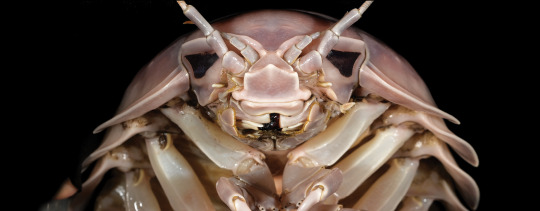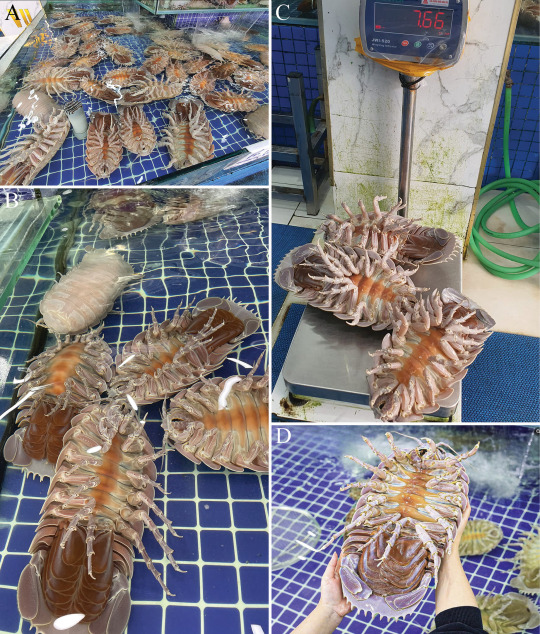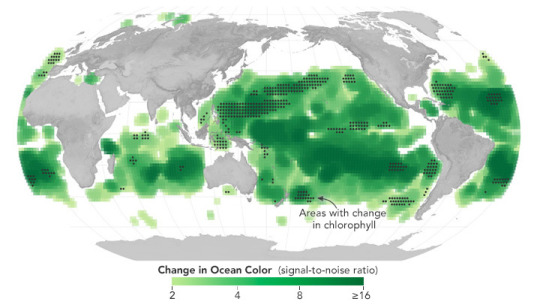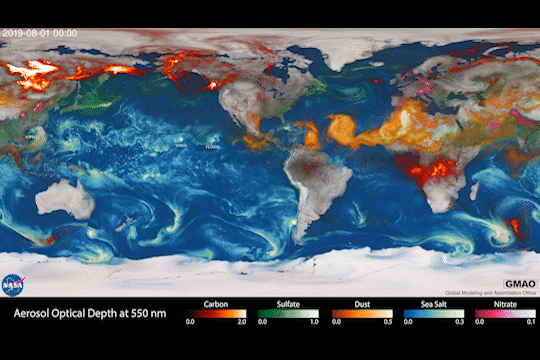Blog dedicted to phytoplankton. Phytoplankton are microscopic organisms that are responsible for half of the photosynthesis that occurs on Earth. Oh, and they look like art... Follow to learn more about these amazing litter critters! Caution: Will share other ocean science posts!Run by an oceanographer and phytoplankton expert. Currently a postdoctoral researcher.Profile image: False Colored SEM image of Emiliania huxleyi, a coccolithophore, and the subject of my doctoral work. Credit: Steve Gschmeissner/ Science Photo Library/ Getty ImagesHeader image: Satellite image of a phytoplankton bloom off the Alaskan Coast, in the Chukchi SeaCredit: NASA image by Norman Kuring/NASA's Ocean Color Web https://earthobservatory.nasa.gov/images/92412/churning-in-the-chukchi-sea
Don't wanna be here? Send us removal request.
Text
Pyrosome passing through #ClearAPathPeople
Pyrosomes are colonial tunicates made up of thousands of individuals known as zooids. Each zooid is housed in the common gelatinous tunic that makes up the larger cylindrical “body” of the pyrosome. Zooids filter phytoplankton through branchial baskets by creating feeding currents through the tunic. Although each zooid is only a couple of millimeters in size, pyrosomes can reach up to several meters in length. While alive, these organisms spend the majority of their time in the upper water column, but their remains have been found as deep as 4,000 meters (13,120 feet), where they provide food for a variety of deep-sea animals.
Pyrosomes are bioluminescent, producing brilliant blue-green light. Each zooid can detect light and emit light in response, creating waves of bioluminescence up and down the organism’s body. The bioluminescence of one pyrosome can trigger others in surrounding waters, producing beautiful light shows. The name Pyrosoma comes from the Greek term meaning “fire body.”
117 notes
·
View notes
Text

1K notes
·
View notes
Text
Anyone else love squids as much as we do? (Qeue slow-motion tentacle-raise) 🙋🏻
Galiteuthis phyllura, also known as the cockatoo squid, lives in the North Pacific from 200 to over 1,000 meters (660 to 3,280 feet) deep. This species has a transparent body and photophores, or light organs, under their eyes. We often encounter them hanging horizontally in the water column with their arms raised above their heads.
255 notes
·
View notes
Text
youtube
Meet MBARI: This team develops innovative new technology to map the seafloor 🤖🗺️
With marine life and ecosystems facing a rising tide of threats, the ocean exploration community needs nimble, cost-effective tools for measuring and monitoring ocean health. MBARI’s Control, Modeling, and Perception of Autonomous Systems Laboratory, known as the CoMPAS Lab is up to the challenge.
MBARI scientists and engineers build and adapt advanced technology that enhances ocean data collection. Led by engineer Giancarlo Troni, the CoMPAS Lab team develops scalable marine technology that can easily be modified for use in a wide variety of vehicles and platforms.

Working with other teams across MBARI, the CoMPAS Lab leverages vehicles like the MiniROV to deploy and test new tools in Monterey Bay's submarine canyon and then adapt them for other mobile platforms. By sharing open-source design specifications and advanced algorithms with the wider ocean exploration community, we hope to expand access to MBARI’s engineering innovations.
MBARI technology is transforming what we know about the ocean and its inhabitants. Our scientists, engineers, and marine operations staff work together to create innovative tools for a more sustainable future where autonomous robots and artificial intelligence can track ocean health in real time and help us visualize ocean animals and environments. Studying our blue backyard is revealing our connection to the ocean—how it sustains us and how our actions on land may be threatening its future.

We’re spotlighting various teams at MBARI to showcase the different ways we’re studying the largest environment on Earth. We hope this series inspires a new generation of ocean explorers. Dive in.
37 notes
·
View notes
Text

DISCOVERING THE GIANTS OF THE DEEP: BATHYNOMUS JAMESI
A newly discovered species of giant isopod, Bathynomus vaderi, has recently been described from the deep waters around Spratly Islands, off Vietnam. The species, named after the infamous Sith Lord, Darth Vader, due to the striking resemblance of its helmet-like head, adds to the growing diversity of the Bathynomus genus. Bathynomus vaderi is characterized by several unique features, including a parallel-margin clypeal region, a raised dorsal surface on its pleotelson, and upwardly curved pleotelson spines.
Giant isopods like Bathynomus vaderi have become an expensive delicacy in Vietnam. Until 2017, local fishermen only sold them as an incidental product at low prices, but in recent years the media has drawn the public's attention to this unusual seafood. Some even claim that it is more delicious than lobster, the "king of seafood." This new species is described from several individual found at seafood markets in Hanoi, Vietnam.

-Seafood market in Hanoi, Vietnam, selling the newly described Bathynomus jamesi. Large specimens exceeding 2 kg in weight command premium prices.
In Vietnam, Bathynomus species, are often referred to as "sea bugs". Their unique appearance and large size make them a delicacy, and they can command high prices, with larger individuals of B. vaderi reaching up to 2 kg. In recent years, demand for these creatures has risen, especially in urban centers like Hanoi and Hồ Chí Minh City, where they are displayed in restaurants and sold through online seafood markets. This growing industry highlights the continued fascination with deep-sea species and the need for ongoing research to better understand their ecology and conservation.
Main photo: Bathynomus vaderi, male, colour in life. Photo by Nguyen Thanh Son
Reference (Open Access): Ng et al., 2025. A new species of supergiant Bathynomus A. Milne-Edwards, 1879 (Crustacea, Isopoda, Cirolanidae) from Vietnam, with notes on the taxonomy of Bathynomus jamesi Kou, Chen & Li, 2017. ZooKeys.
35 notes
·
View notes
Text
NSF cancels grant reviews due to WH executive order
The National Science Foundation (NSF)—the major funding agency for basic science—has canceled all grant review panels this week to comply with an executive order from the new administration. This is where independent panels of scientists discuss grant proposals they’ve reviewed for scientific merit and recommend which projects get funded to NSF project managers. A LOT of work goes into setting up and scheduling grant reviews. It will take time to reschedule these panels, delaying key decisions for many promising projects. This will wreak havoc on science grant funding for months to come.
Put simply, this action along with the halting of NIH-funded grants are blatant and reckless political attacks on science, from an administration that seeks blinding loyalty.
34 notes
·
View notes
Text
It’s no secret that we think sea otters are pretty swell. 🦦🌊
They are critical in keeping our kelp forests healthy and more resilient to climate change.
2K notes
·
View notes
Text
These rays need a hero—could it be you?
Gliding through the open ocean with style, the pelagic stingray is a sleek swimmer facing a big challenge: getting caught as bycatch in the fishing industry.

Dive into our free online course, Rays of Hope! Designed for 9th–12th graders, this program dives deep into the challenges faced by pelagic stingrays.
Through inspiring videos and interactive games, you’ll not only learn about these issues but also create your own solution to drive positive change—because hope starts with YOU!
Learn more and start your journey!
647 notes
·
View notes
Text
Showing off those glide and pivot skills 😶🌫️
Fishes in the family Macrouridae, also known as rattails, can glimpse even the faintest flickers of bioluminescence—the “living light” produced by deep-sea animals. Their keen eyesight reveals prey, like fishes and squid, darting in the waters above the seafloor. A rattail relies on other senses, like smell and touch, to find a meal too. It has a nose for rotting carrion, and sensitive barbels on its chin detect small crustaceans or worms wiggling in the mud below.
432 notes
·
View notes
Text
Guess hoo-hoo it is 🦉
The owlfish, named for the size of its large eyes relative to its head, lives throughout the North Pacific. These species are in the family Bathylagidae and are relatively common in the deep sea, living at depths of over 6,000 meters (19,685 feet). In Monterey Bay, we observe these fish between a few hundred meters to over 2,000 meters (6,560 feet)
495 notes
·
View notes
Text
NSF cancels grant reviews due to WH executive order
The National Science Foundation (NSF)—the major funding agency for basic science—has canceled all grant review panels this week to comply with an executive order from the new administration. This is where independent panels of scientists discuss grant proposals they’ve reviewed for scientific merit and recommend which projects get funded to NSF project managers. A LOT of work goes into setting up and scheduling grant reviews. It will take time to reschedule these panels, delaying key decisions for many promising projects. This will wreak havoc on science grant funding for months to come.
Put simply, this action along with the halting of NIH-funded grants are blatant and reckless political attacks on science, from an administration that seeks blinding loyalty.
34 notes
·
View notes
Text
Alone in the world is a little catshark 🦈
This is one of the three deep-sea catshark species found in the Northeast Pacific, the longnose catshark, Apristurus kampae. They are found at depths ranging from 180 to 1,888 meters (590 to 6,500).
Catsharks are bottom feeders and are most active at night, often sleeping in groups during the day and hunting at night.
319 notes
·
View notes
Text
Next month will be the one year anniversary of the PACE launch!

Sharpening Our View of Climate Change with the Plankton, Aerosol, Cloud, ocean Ecosystem Satellite
As our planet warms, Earth’s ocean and atmosphere are changing.
Climate change has a lot of impact on the ocean, from sea level rise to marine heat waves to a loss of biodiversity. Meanwhile, greenhouse gases like carbon dioxide continue to warm our atmosphere.
NASA’s upcoming satellite, PACE, is soon to be on the case!
Set to launch on Feb. 6, 2024, the Plankton, Aerosol, Cloud, ocean Ecosystem (PACE) mission will help us better understand the complex systems driving the global changes that come with a warming climate.

Earth’s ocean is becoming greener due to climate change. PACE will see the ocean in more hues than ever before.
While a single phytoplankton typically can’t be seen with the naked eye, communities of trillions of phytoplankton, called blooms, can be seen from space. Blooms often take on a greenish tinge due to the pigments that phytoplankton (similar to plants on land) use to make energy through photosynthesis.
In a 2023 study, scientists found that portions of the ocean had turned greener because there were more chlorophyll-carrying phytoplankton. PACE has a hyperspectral sensor, the Ocean Color Instrument (OCI), that will be able to discern subtle shifts in hue. This will allow scientists to monitor changes in phytoplankton communities and ocean health overall due to climate change.

Phytoplankton play a key role in helping the ocean absorb carbon from the atmosphere. PACE will identify different phytoplankton species from space.
With PACE, scientists will be able to tell what phytoplankton communities are present – from space! Before, this could only be done by analyzing a sample of seawater.
Telling “who’s who” in a phytoplankton bloom is key because different phytoplankton play vastly different roles in aquatic ecosystems. They can fuel the food chain and draw down carbon dioxide from the atmosphere to photosynthesize. Some phytoplankton populations capture carbon as they die and sink to the deep ocean; others release the gas back into the atmosphere as they decay near the surface.
Studying these teeny tiny critters from space will help scientists learn how and where phytoplankton are affected by climate change, and how changes in these communities may affect other creatures and ocean ecosystems.

Climate models are one of our most powerful tools to understand how Earth is changing. PACE data will improve the data these models rely on.
The PACE mission will offer important insights on airborne particles of sea salt, smoke, human-made pollutants, and dust – collectively called aerosols – by observing how they interact with light.
With two instruments called polarimeters, SPEXone and HARP2, PACE will allow scientists to measure the size, composition, and abundance of these microscopic particles in our atmosphere. This information is crucial to figuring out how climate and air quality are changing.
PACE data will help scientists answer key climate questions, like how aerosols affect cloud formation or how ice clouds and liquid clouds differ.
It will also enable scientists to examine one of the trickiest components of climate change to model: how clouds and aerosols interact. Once PACE is operational, scientists can replace the estimates currently used to fill data gaps in climate models with measurements from the new satellite.

With a view of the whole planet every two days, PACE will track both microscopic organisms in the ocean and microscopic particles in the atmosphere. PACE’s unique view will help us learn more about the ways climate change is impacting our planet’s ocean and atmosphere.
Stay up to date on the NASA PACE blog, and make sure to follow us on Tumblr for your regular dose of sPACE!
#remote sensing#oceanography#phytoplankton#ocean color#PACE#climate#climate change#algae#Earth#marine science#ocean science#oceans#ocean
1K notes
·
View notes
Text
12 notes
·
View notes
Photo

Friendly Beluga Whale Plays Fetch With Crew of a South African Ship Using a 2019 Rugby World Cup Ball
147 notes
·
View notes
Photo

This Type of Algae Absorbs More Light for Photosynthesis Than Other Plants
An obscure and ecologically successful group of algae, known as cryptophytes, have evolved pigments that capture light where chlorophyll cannot, Dudycha and colleagues report in a series of recent papers. The extra energy absorption from more wavelengths of light has allowed these algae to thrive in a variety of diverse environments, from oceans to streams to ponds to mud puddles.
122 notes
·
View notes
Link
For two years, the Bering Sea has been largely without winter ice, a development scientists modeling the warming impacts of greenhouse-gas pollution from fossil fuels once forecast would not occur until 2050.
This ice provided a giant platform for growing algae at the base of the food chain, and has been a significant contributor to the remarkable productivity of a body of water, stretching from Alaska to northeast Russia, that sustains some of the biggest fisheries on the planet.
14 notes
·
View notes